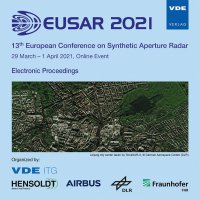A Study of the Capabilities and Limitations of L-band SAR for Oil Thickness Measurement
Konferenz: EUSAR 2021 - 13th European Conference on Synthetic Aperture Radar
29.03.2021 - 01.04.2021 in online
Tagungsband: EUSAR 2021
Seiten: 4Sprache: EnglischTyp: PDF
Autoren:
Jones, Cathleen E.; Jaruwatanadilok, Sermsak; Duan, Xueyang; Holt, Benjamin (Jet Propulsion Laboratory, California Institute of Technology, USA)
Monaldo, Frank (National Oceanic and Atmospheric Administration, USA)
Inhalt:
A study combining L-band SAR measurements and electromagnetic scattering modeling to evaluate the capabilities and limitations of the use of L-band SAR for determination of oil thickness in slicks on open water is discussed. The goal of the study is to determine whether oil slick thickness can be derived from the damping ratio, either in a relative sense to identify areas with thicker oil, or in an absolute sense by quantitative determination of the slick thickness either with or without calibration against known values at point locations within the slick. For relative thickness, the measured damping ratio over a slick in the Gulf of Mexico observed during two days in November 2016 was compared to field observations to obtain a Bonn-like oil thickness classification. To evaluate the feasibility of absolute thickness measurement, an electromagnetic scattering model was used to model the SAR NRCS from a realistic ocean surface damped by oil with different bulk and interfacial characteristics. The sensitivity to the oil properties and ocean temperature and salinity are explored to identify the most critical parameters. The model results are used to evaluate whether the oil thickness can be quantified based upon backscatter intensities alone, constrained only by information about metocean conditions.


